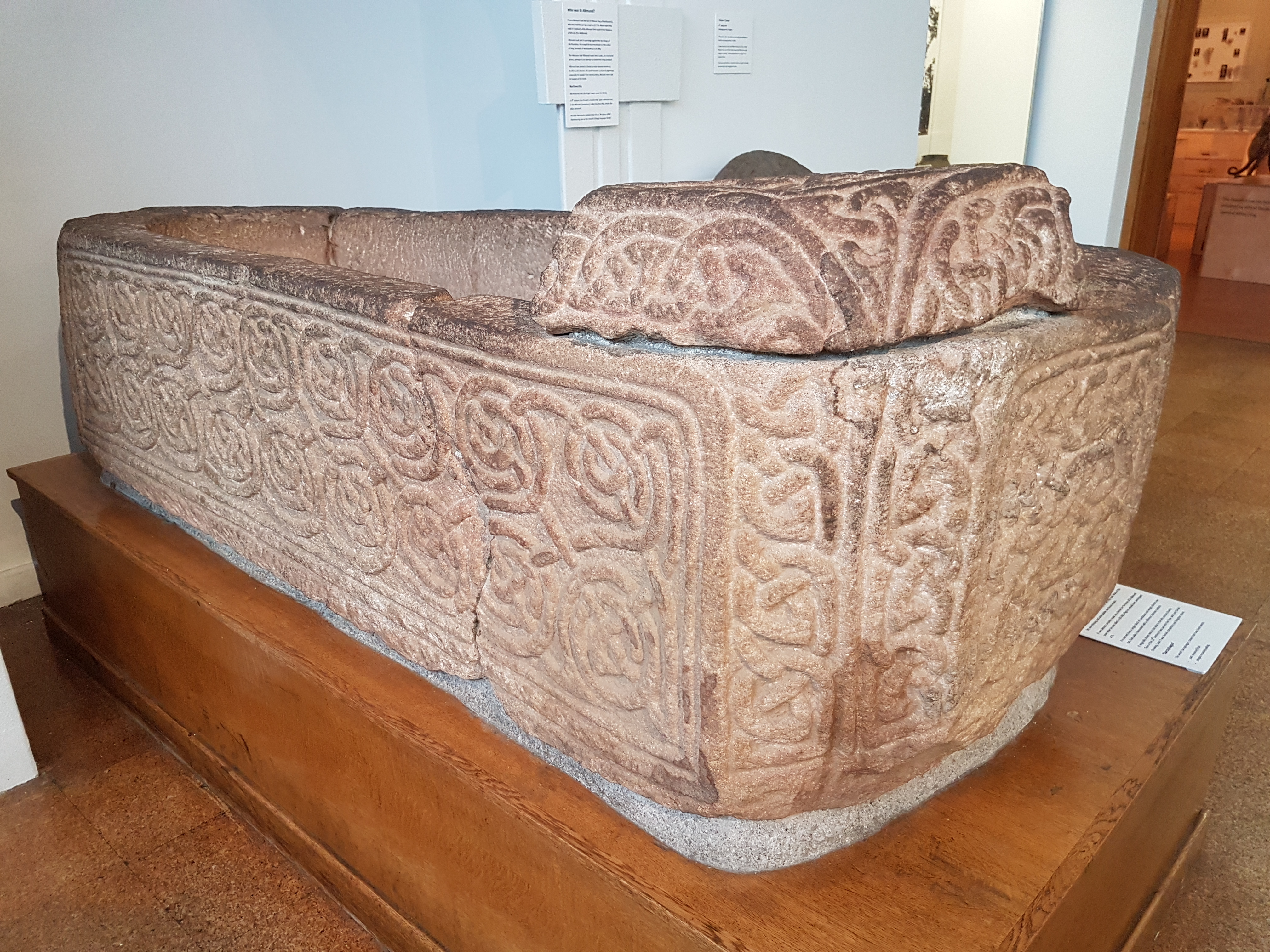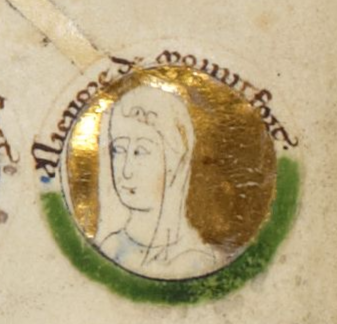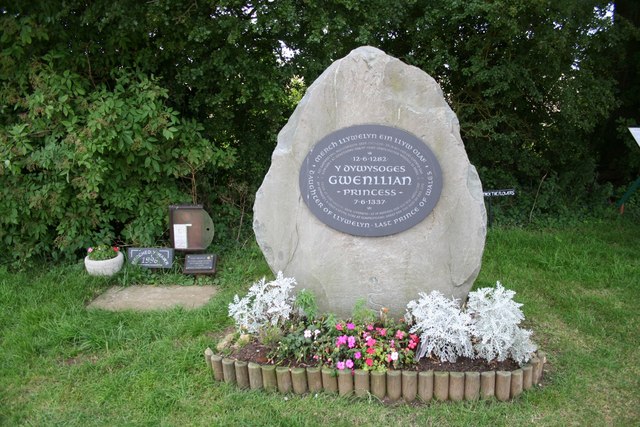|
Gwenllian Of Wales
Gwenllian ferch Llywelyn (June 1282 – 7 June 1337), commonly known as Gwenllian of Wales, was the daughter of Llywelyn ap Gruffudd, the last native Prince of Wales (). Gwenllian is sometimes confused with Gwenllian ferch Gruffudd, who lived two centuries earlier. Lineage Gwenllian (pronounced ) was born in the Gwynedd royal home in Abergwyngregyn near Bangor, Wales, Bangor, Gwynedd. Gwenllian's mother, Eleanor de Montfort, died during childbirth, or shortly afterwards, on 19 June 1282. Gwenllian was descended from dual royal bloodlines: not only was she the daughter of the Prince of Gwynedd and heiress of the royal family of The House of Aberffraw, but her maternal great-grandfather was John of England, King John of England. Capture by King Edward I A few months after Gwenllian's birth, northern Wales was encircled by the English army of Edward I of England, King Edward I. On 11 December 1282, her father, Llywelyn ap Gruffudd, was Battle of Orewin Bridge, killed in bat ... [...More Info...] [...Related Items...] OR: [Wikipedia] [Google] [Baidu] |
Abergwyngregyn
Abergwyngregyn () is a village and Community (Wales), community of historical note in Gwynedd, a county and Principal areas of Wales, principal area in Wales. Under its historic name of Aber Garth Celyn it was the seat of Llywelyn ap Gruffudd. It lies in the Historic counties of Wales, historic county of Caernarfonshire. It is located at , adjacent to the A55 road, A55, east of Bangor, Wales, Bangor, west of Conwy. The Aber community, which covers an area of , has a population of 240 (2011). History Abergwyngregyn, generally shortened to Aber, is a settlement of great antiquity and pre-Norman Conquest, Conquest importance on the north coast of Gwynedd. Its boundaries stretch from the Menai Strait up to the headwaters of the Afon Goch and Afon Anafon. Protected to the east by the headland of Penmaenmawr, and at its rear by Snowdonia, it controlled the ancient crossing point of the Lafan Sands to Anglesey. A pre-Roman defensive enclosure, Maes y Gaer, which rises above Pen y ... [...More Info...] [...Related Items...] OR: [Wikipedia] [Google] [Baidu] |
Shrewsbury
Shrewsbury ( , ) is a market town and civil parish in Shropshire (district), Shropshire, England. It is sited on the River Severn, northwest of Wolverhampton, west of Telford, southeast of Wrexham and north of Hereford. At the 2021 United Kingdom census, 2021 census, the parish had a population of 76,782. It is the county town of the ceremonial county of Shropshire. Shrewsbury has Anglo-Saxons, Anglo-Saxon roots and institutions whose foundations, dating from that time, represent a cultural continuity possibly going back as far as the 8th century. The centre has a largely undisturbed medieval street plan and over 660 Listed buildings in Shrewsbury, listed buildings, including several examples of timber framing from the 15th and 16th centuries. Shrewsbury Castle, a red sandstone fortification, and Shrewsbury Abbey, were founded in 1074 and 1083 respectively by the Normans, Norman Earl of Shrewsbury, Roger de Montgomery. The town is the birthplace of Charles Darwin. It has ... [...More Info...] [...Related Items...] OR: [Wikipedia] [Google] [Baidu] |
Gruffudd Ap Llywelyn Ab Iorwerth
Gruffudd ap Llywelyn ab Iorwerth (c. 1196 – 1 March 1244) was a Welsh prince, and the first-born son of Llywelyn ab Iorwerth (Llywelyn the Great). His mother Tangwystl (c. 1180/1185 – c. 1210) probably died in childbirth. Hostage As a boy, Gruffudd was one of the hostages taken by King John of England as a pledge for his father's continued good faith. A clause in Magna Carta (1215) compelled his release. On his father's death in 1240, under Welsh law, he would have been entitled to consideration as his father's successor. Llywelyn, however, had excluded him from the succession and had declared Dafydd, his son by his wife Joan, to be heir to the kingdom. Llywelyn went to great lengths to strengthen Dafydd's position, probably aware that there would be considerable Welsh support for Gruffudd against the half-English Dafydd. Power Gruffudd was given lands in Ardudwy and Meirionnydd by his father, though in 1221 he was removed for maladministration of those lands. In 1223 h ... [...More Info...] [...Related Items...] OR: [Wikipedia] [Google] [Baidu] |
Heir Apparent
An heir apparent is a person who is first in the order of succession and cannot be displaced from inheriting by the birth of another person. A person who is first in the current order of succession but could be displaced by the birth of a more eligible heir is known as an heir presumptive. Today these terms most commonly describe heirs to hereditary titles (e.g. titles of nobility) or offices, especially when only inheritable by a single person. Most monarchies refer to the heir apparent of their thrones with the descriptive term of ''crown prince'' or ''crown princess'', but they may also be accorded with a more specific substantive title: such as Prince of Orange in the Netherlands, Duke of Brabant in Belgium, Prince of Asturias in Spain (also granted to heirs presumptive), or the Prince of Wales in England and Wales; former titles include Dauphin in the Kingdom of France, and Tsesarevich in Imperial Russia. The term is also applied metaphorically to an expected succe ... [...More Info...] [...Related Items...] OR: [Wikipedia] [Google] [Baidu] |
Owain Ap Dafydd
Owain ap Dafydd ( – ), potential claimant to the title Prince of Gwynedd, was the younger son of Dafydd ap Gruffudd, the last free ruler of Gwynedd and the self-proclaimed Prince of Wales. Nothing is known of his early life, though it is thought he likely accompanied his father during exile in England in the 1270s. His mother was Elizabeth Ferrers. After the death of his uncle Llywelyn ap Gruffudd in late 1282, the governance of Gwynedd was assumed by his father Dafydd ap Gruffudd. After a brief struggle, he and his father were captured together, close to Bera Mawr, above Bethesda on 21 or 22 June 1283. Shortly after this, Dafydd was brought to Shrewsbury where he was executed for treason in October. Following the arrest of his elder brother Llywelyn on 29 June, they were both escorted under guard out of Gwynedd via Acton Burnell to Bristol Castle. Llywelyn died in 1287, while Owain was last reported to be alive in 1325 when he would have been in his fifties. During muc ... [...More Info...] [...Related Items...] OR: [Wikipedia] [Google] [Baidu] |
Llywelyn Ap Dafydd
Llywelyn ap Dafydd (c.1267–1287), potential claimant to the title Prince of Gwynedd, was the eldest son of Dafydd ap Gruffydd, the last free ruler of Gwynedd, and his wife Elizabeth Ferrers. Nothing is known of his early life, though it is thought he was probably born some time around 1267. It is likely he accompanied his father during periods of exile in England in the 1270s. Following the death of Llywelyn ap Gruffudd on 11 December 1282 the governance of Gwynedd was placed in the hands of Llywelyn's successor, his brother, Dafydd ap Gruffudd. Dafydd and his son Owain were captured together at Nanhysglain near to Bera Mawr in the uplands above Abergwyngregyn on 21 June 1283. King Edward I of England then issued orders for the apprehension of the primogeniture of Dafydd ap Gruffudd. On 29 June, Llywelyn ap Dafydd was arrested and taken to Rhuddlan to be imprisoned alongside his brother. A force of cavalry and infantry were deployed to escort Llywelyn and Owain out ... [...More Info...] [...Related Items...] OR: [Wikipedia] [Google] [Baidu] |
Bristol Castle
Bristol Castle was a Norman castle established in the late 11th century on the north bank of the River Avon in Bristol. Remains can be seen today in Castle Park near the Broadmead Shopping Centre, including the sally port. Built during the reign of William the Conqueror, and later owned by Robert FitzHamon, it became an important royal castle and was the scene of several imprisonments and executions. The castle was modified and further fortified between the 12th and 13th centuries under Robert of Gloucester and King Henry III. By the 16th century it was mostly neglected; it was torn down in 1656 under orders from Oliver Cromwell. Site The castle was built on a strategic site on the eastern side of the walled town, between the River Avon on the south and the River Frome on the north, joined by a canal to form the castle moat on the east side, with a weir on the north to compensate for differing water levels in the two rivers. As the town of Bristol was itself built in t ... [...More Info...] [...Related Items...] OR: [Wikipedia] [Google] [Baidu] |
Edward III Of England
Edward III (13 November 1312 – 21 June 1377), also known as Edward of Windsor before his accession, was King of England from January 1327 until his death in 1377. He is noted for his military success and for restoring royal authority after the disastrous and unorthodox reign of his father, Edward II. Edward III transformed the Kingdom of England into one of the most formidable military powers in Europe. His fifty-year reign is List of monarchs in Britain by length of reign#Ten longest-reigning British monarchs, one of the longest in English history, and saw vital developments in legislation and government, in particular the evolution of the English Parliament, as well as the ravages of the Black Death. He outlived his eldest son, Edward the Black Prince, and was succeeded by his grandson, Richard II. Edward was crowned at age fourteen after his father was deposed by his mother, Isabella of France, and her lover, Roger Mortimer, 1st Earl of March, Roger Mortimer. At the age of ... [...More Info...] [...Related Items...] OR: [Wikipedia] [Google] [Baidu] |
Gwenllian Tribute
Gwenllian (or Gwenllïan) is a Welsh given name, a combination of ''gwen'' "fair, blessed, white" and ''llian'' " flaxen"). It is most prominently known as the name of two women in medieval Wales who have, for different reasons, become symbols of Welsh patriotism and/or independence. Notable people Arts and entertainment * Gwenllian Anthony, member of Adwaith * Gwenllian Gill, actress Athletes * Gwenllian Jenkins, rugby union player * Gwenllian Pyrs, rugby union player Medieval Wales *Gwenllian ferch Gruffydd (1097–1136) Her patriotic revolt and subsequent death in battle at Kidwelly Castle contributed to the Great Revolt of 1136 *Gwenllian ferch Llywelyn (1282–1337) A daughter of Llywelyn ap Gruffudd, Ein Llyw Olaf, and sister to Catherine his eldest daughter. Owain Glyndŵr was later to adopt the (lions rampant version) arms of Llywelyn on the basis of direct descent via Catherine, Catherine being the heraldic heiress of Llywelyn.Owen, Edward: ‘Owain Lawgoch � ... [...More Info...] [...Related Items...] OR: [Wikipedia] [Google] [Baidu] |
Princess Of Wales
Princess of Wales (; ) is a title used since the 14th century by the wife of the Prince of Wales. The Princess is the apparent future queen consort, as "Prince of Wales" is a title reserved by custom for the heir apparent to the Monarchy of the United Kingdom, British throne, and earlier the English throne. The current title-holder is Catherine, Princess of Wales, Catherine (née Middleton family, Middleton). When the title was first recorded it was not connected to the English throne; it developed in an independent Wales when it was held by Eleanor de Montfort, wife of the List of rulers of Wales, native Prince of Wales Llywelyn ap Gruffudd, Llywelyn ap Gruffydd. Background Prior to "Princess" (Welsh language, Welsh: ) the title of "Queen" (Welsh language, Welsh: ) was used by some spouses of the rulers of Wales. Examples are Angharad ferch Owain, wife of Gruffudd ap Cynan, and Cristin verch Goronwy, wife of Gruffudd's son, Owain Gwynedd (specifically, she was known as "Quee ... [...More Info...] [...Related Items...] OR: [Wikipedia] [Google] [Baidu] |
Sempringham
Sempringham is a village in the civil parish of Pointon and Sempringham, in the South Kesteven district of Lincolnshire, England. It is situated south from the A52 road, east from Grantham and north from Bourne. The hamlet is on the western edge of the Lincolnshire Fens, the closest village being Billingborough, to the north on the B1177 road. Sempringham is noted as the home of Gilbert of Sempringham, the son of the lord of the manor. Gilbert is the only English Saint to have founded a monastic order, the Gilbertines.Official site of Lincolnshire, p. 4 In 1921 the parish had a population of 112. On 1 April 1931 the parish was abolished to form "Pointon and Sempringham". Sempringham consists of a church and a holy well, with other houses east from the church scattered along the B1177 between Pointon and Billingborough. The church stands at an altitude of about , on land rising out of flat fenland. Pointon is the chief township of the civil parish, which includes Millth ... [...More Info...] [...Related Items...] OR: [Wikipedia] [Google] [Baidu] |





